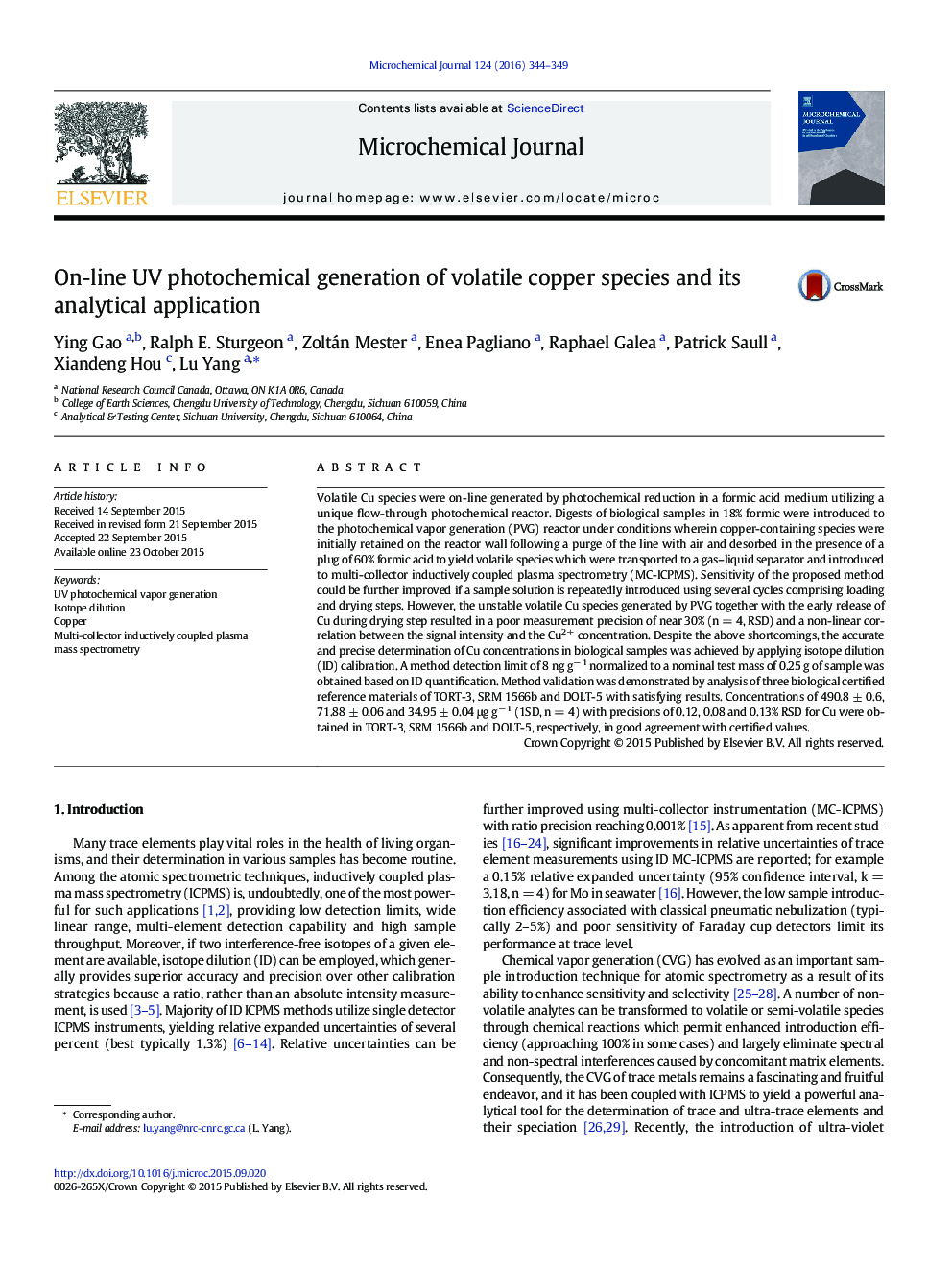| Article ID | Journal | Published Year | Pages | File Type |
|---|---|---|---|---|
| 7642221 | Microchemical Journal | 2016 | 6 Pages |
Abstract
Volatile Cu species were on-line generated by photochemical reduction in a formic acid medium utilizing a unique flow-through photochemical reactor. Digests of biological samples in 18% formic were introduced to the photochemical vapor generation (PVG) reactor under conditions wherein copper-containing species were initially retained on the reactor wall following a purge of the line with air and desorbed in the presence of a plug of 60% formic acid to yield volatile species which were transported to a gas-liquid separator and introduced to multi-collector inductively coupled plasma spectrometry (MC-ICPMS). Sensitivity of the proposed method could be further improved if a sample solution is repeatedly introduced using several cycles comprising loading and drying steps. However, the unstable volatile Cu species generated by PVG together with the early release of Cu during drying step resulted in a poor measurement precision of near 30% (n = 4, RSD) and a non-linear correlation between the signal intensity and the Cu2 + concentration. Despite the above shortcomings, the accurate and precise determination of Cu concentrations in biological samples was achieved by applying isotope dilution (ID) calibration. A method detection limit of 8 ng gâ 1 normalized to a nominal test mass of 0.25 g of sample was obtained based on ID quantification. Method validation was demonstrated by analysis of three biological certified reference materials of TORT-3, SRM 1566b and DOLT-5 with satisfying results. Concentrations of 490.8 ± 0.6, 71.88 ± 0.06 and 34.95 ± 0.04 μg gâ 1 (1SD, n = 4) with precisions of 0.12, 0.08 and 0.13% RSD for Cu were obtained in TORT-3, SRM 1566b and DOLT-5, respectively, in good agreement with certified values.
Related Topics
Physical Sciences and Engineering
Chemistry
Analytical Chemistry
Authors
Ying Gao, Ralph E. Sturgeon, Zoltán Mester, Enea Pagliano, Raphael Galea, Patrick Saull, Xiandeng Hou, Lu Yang,
